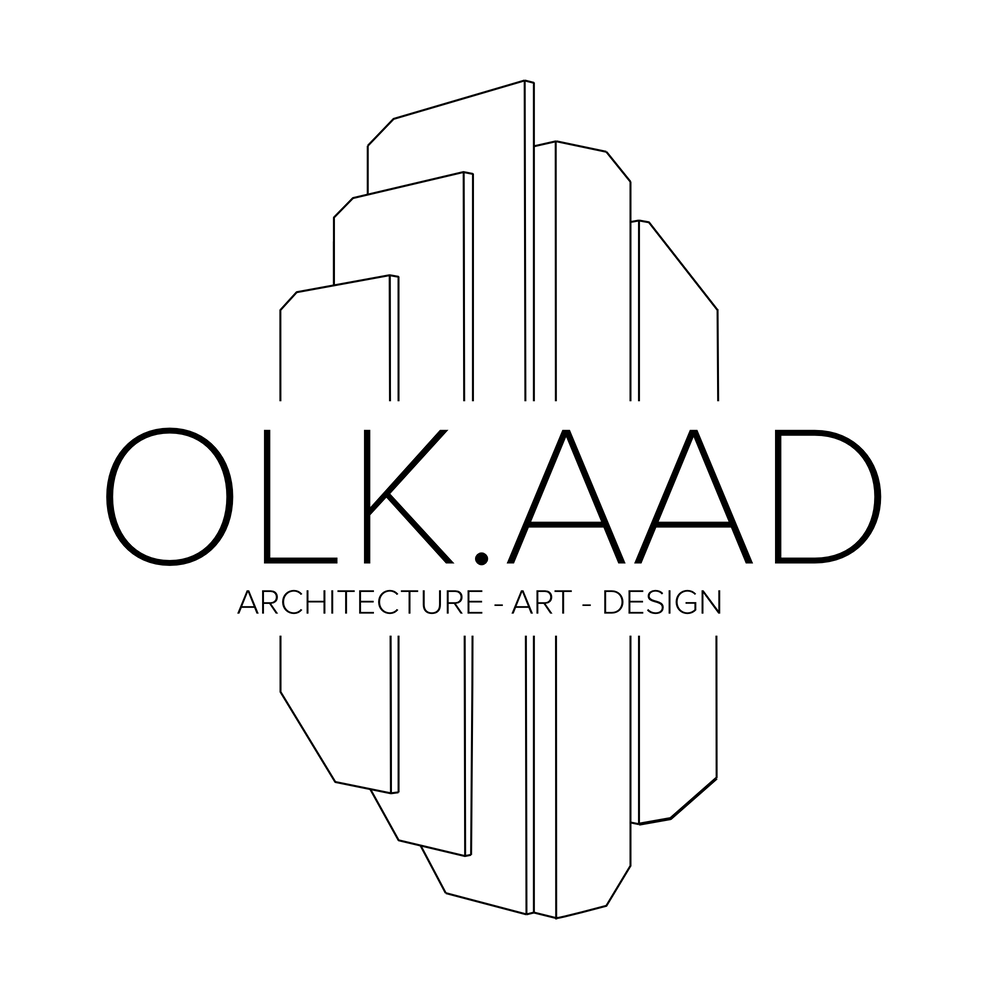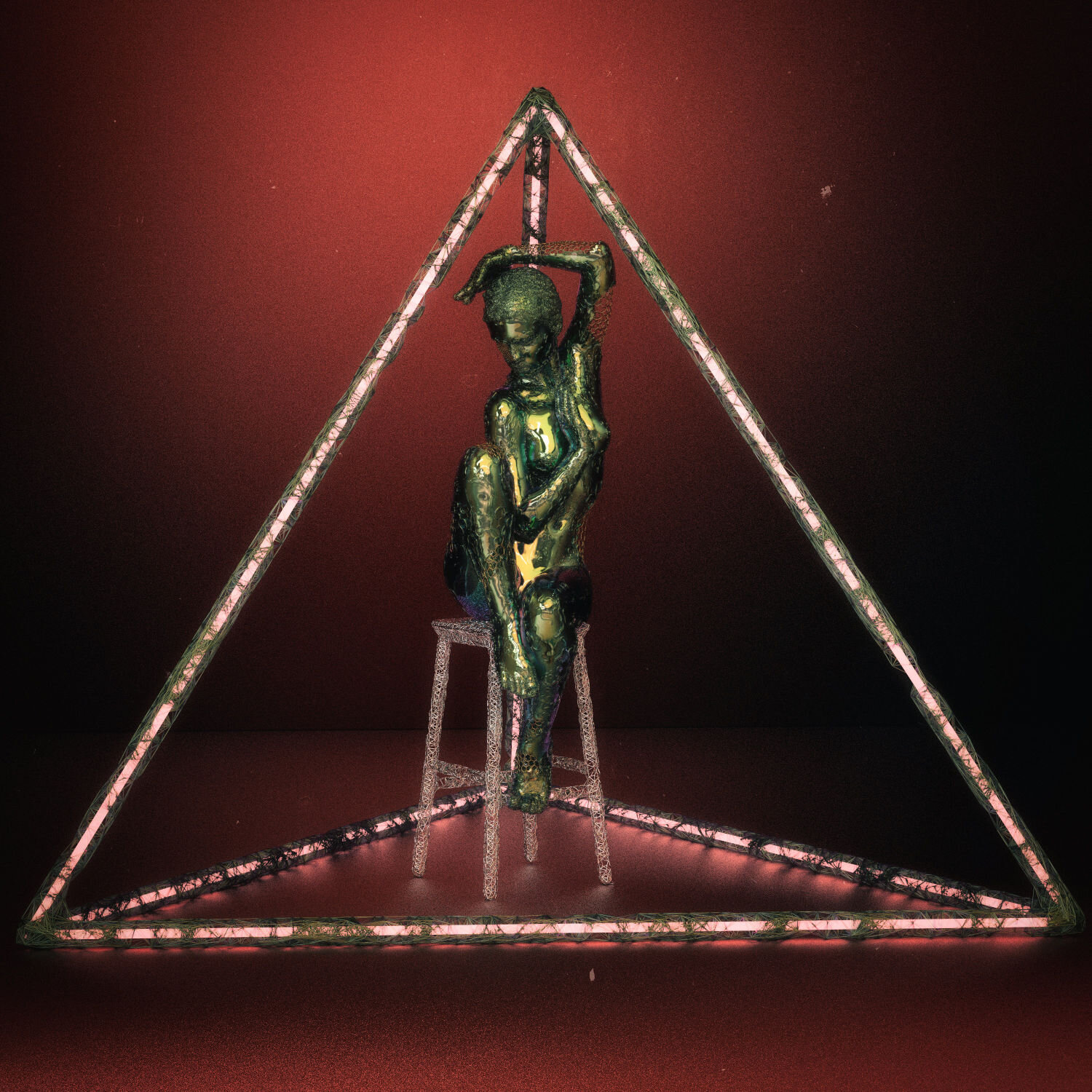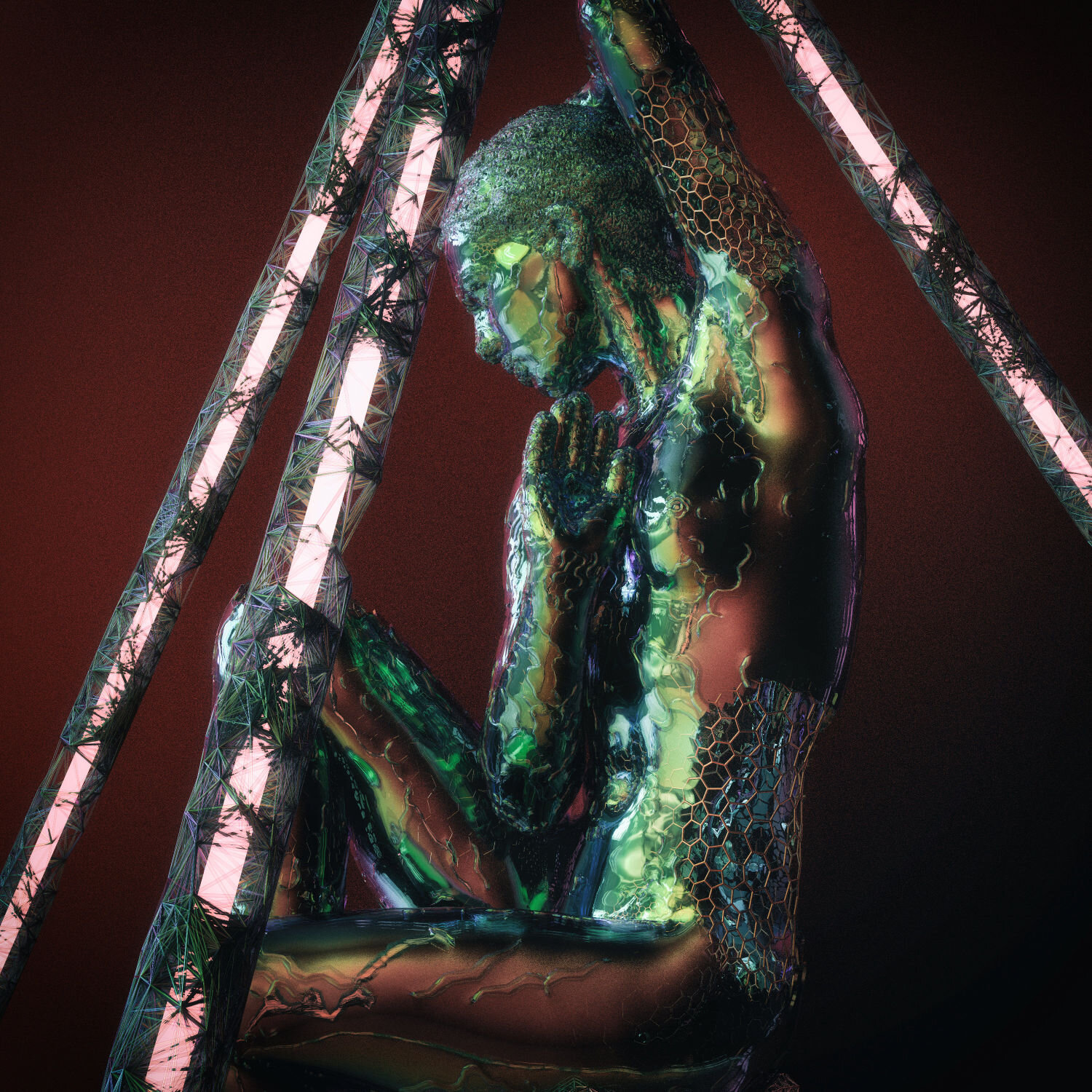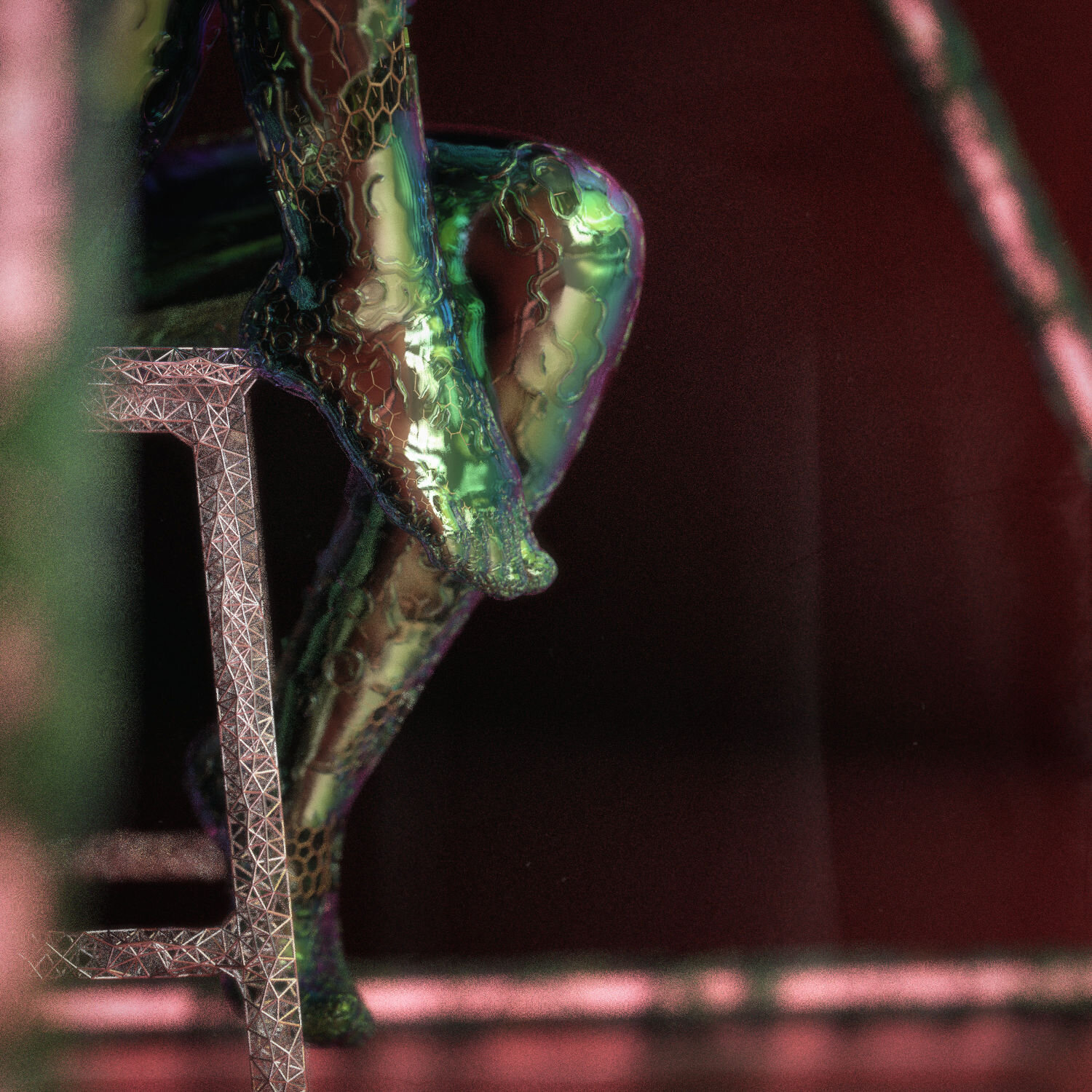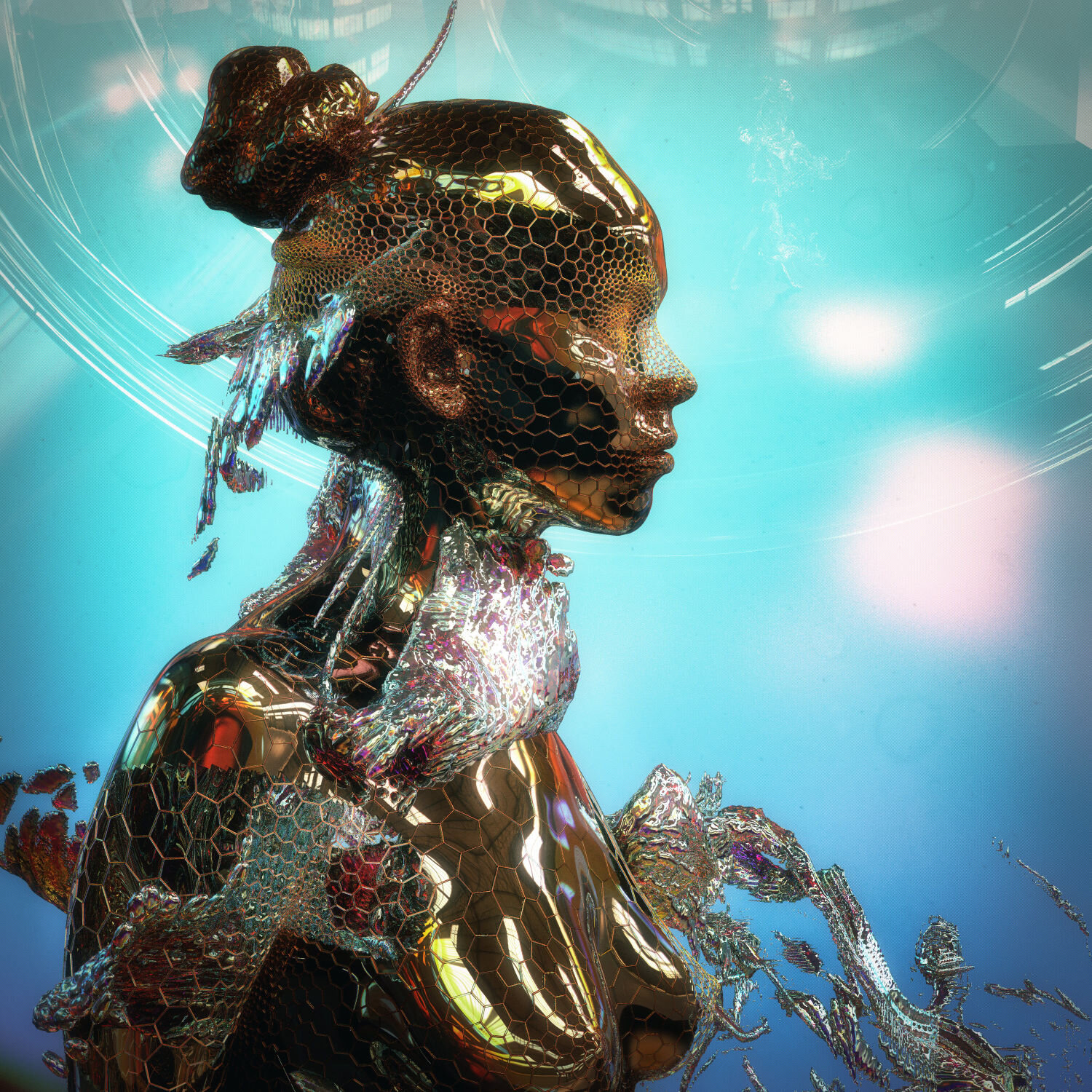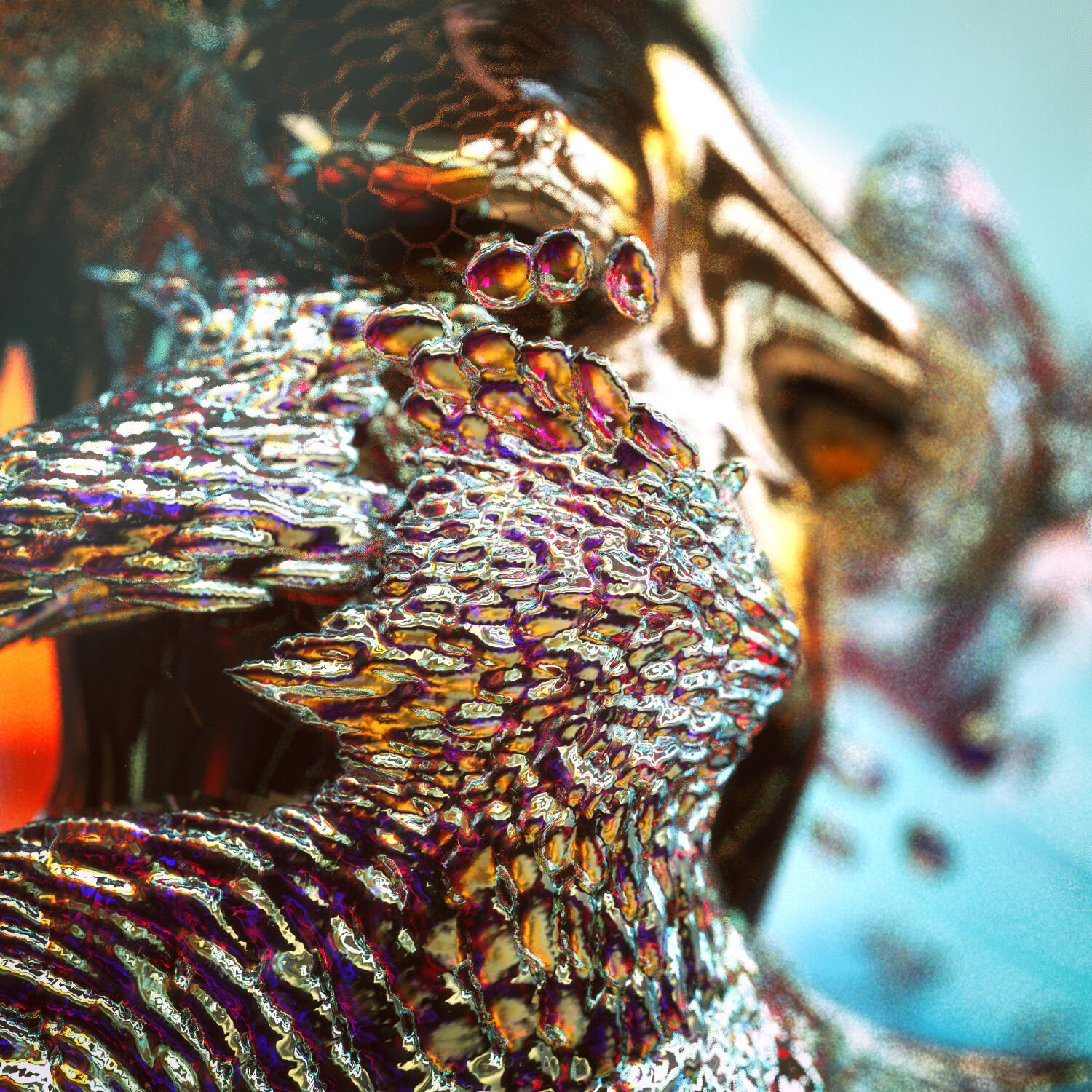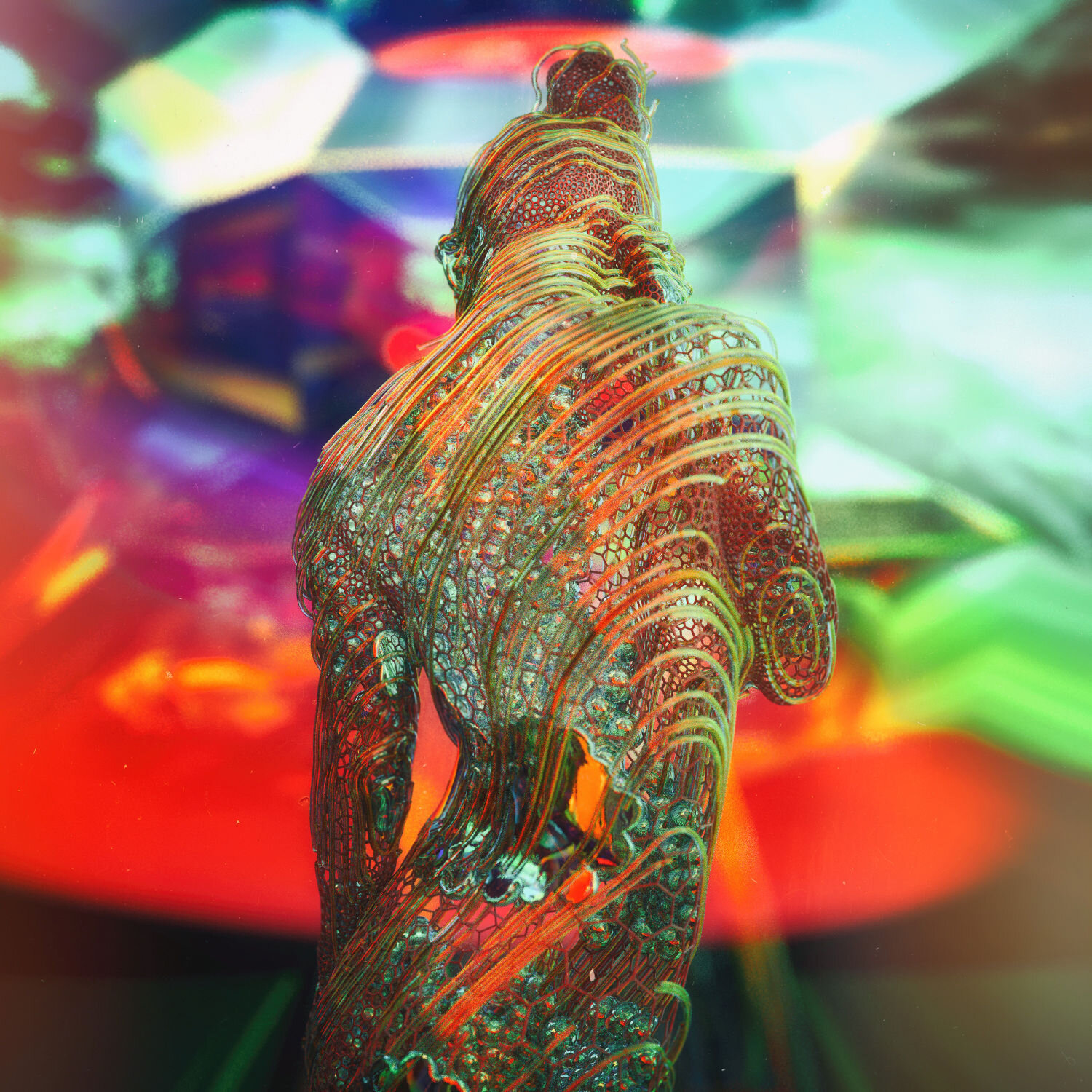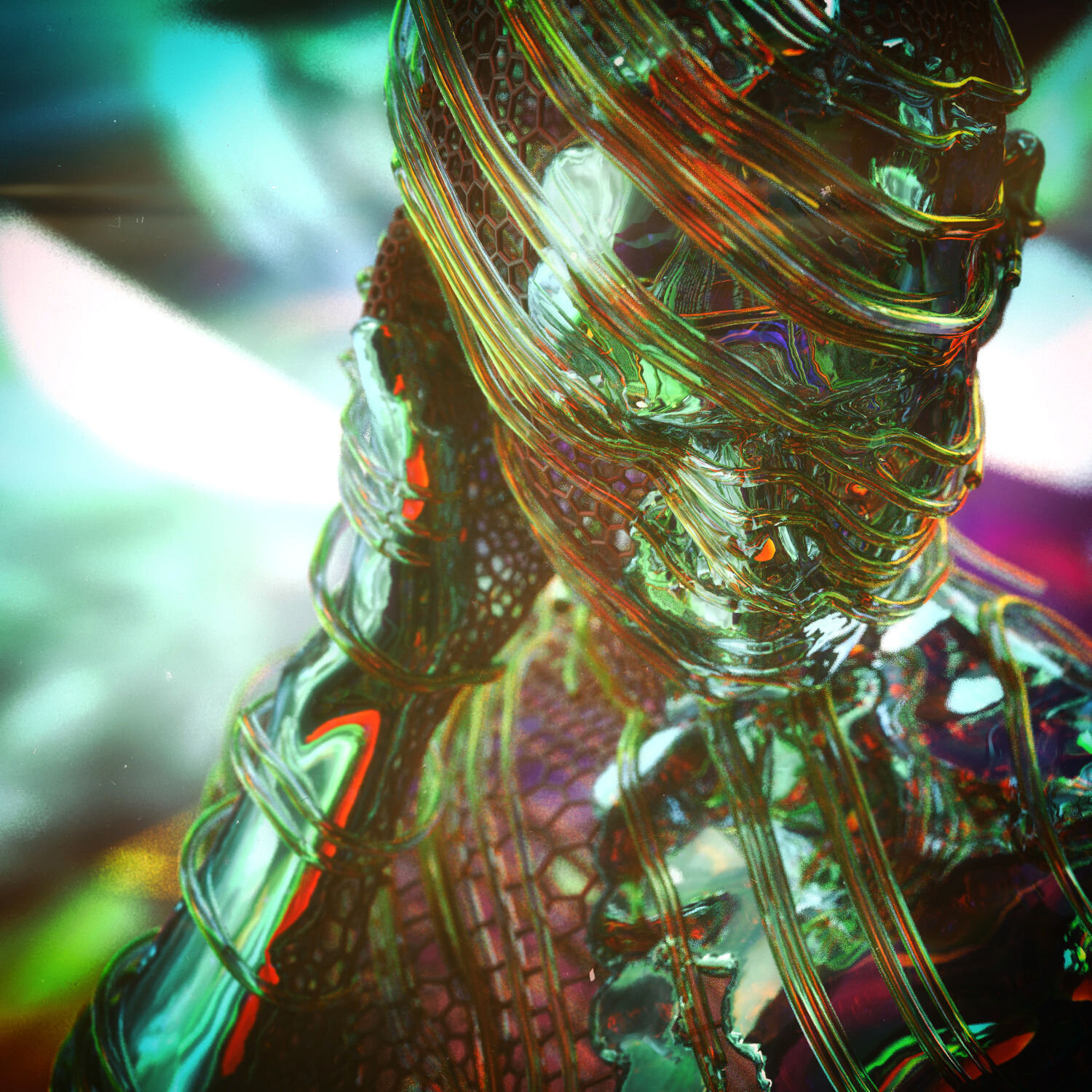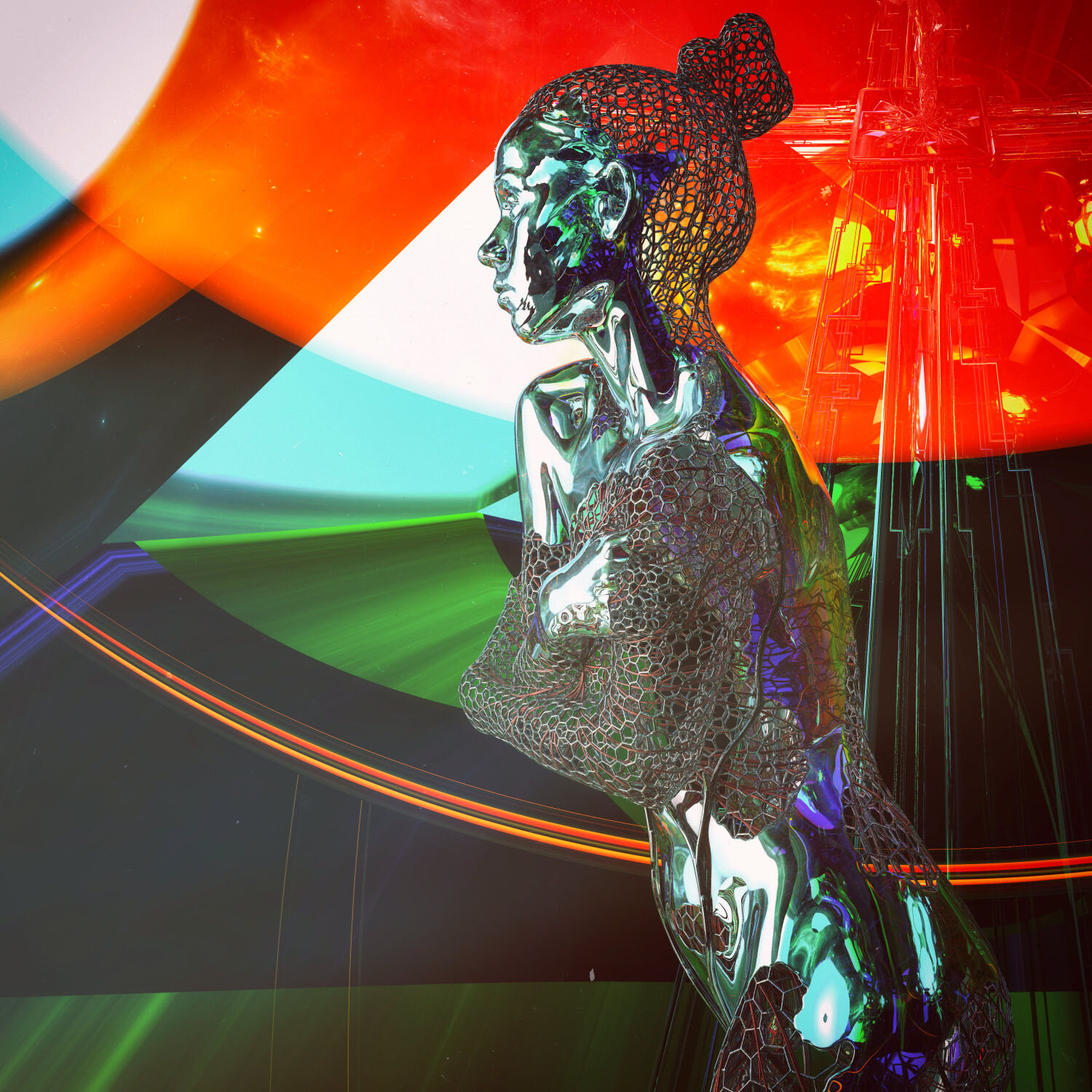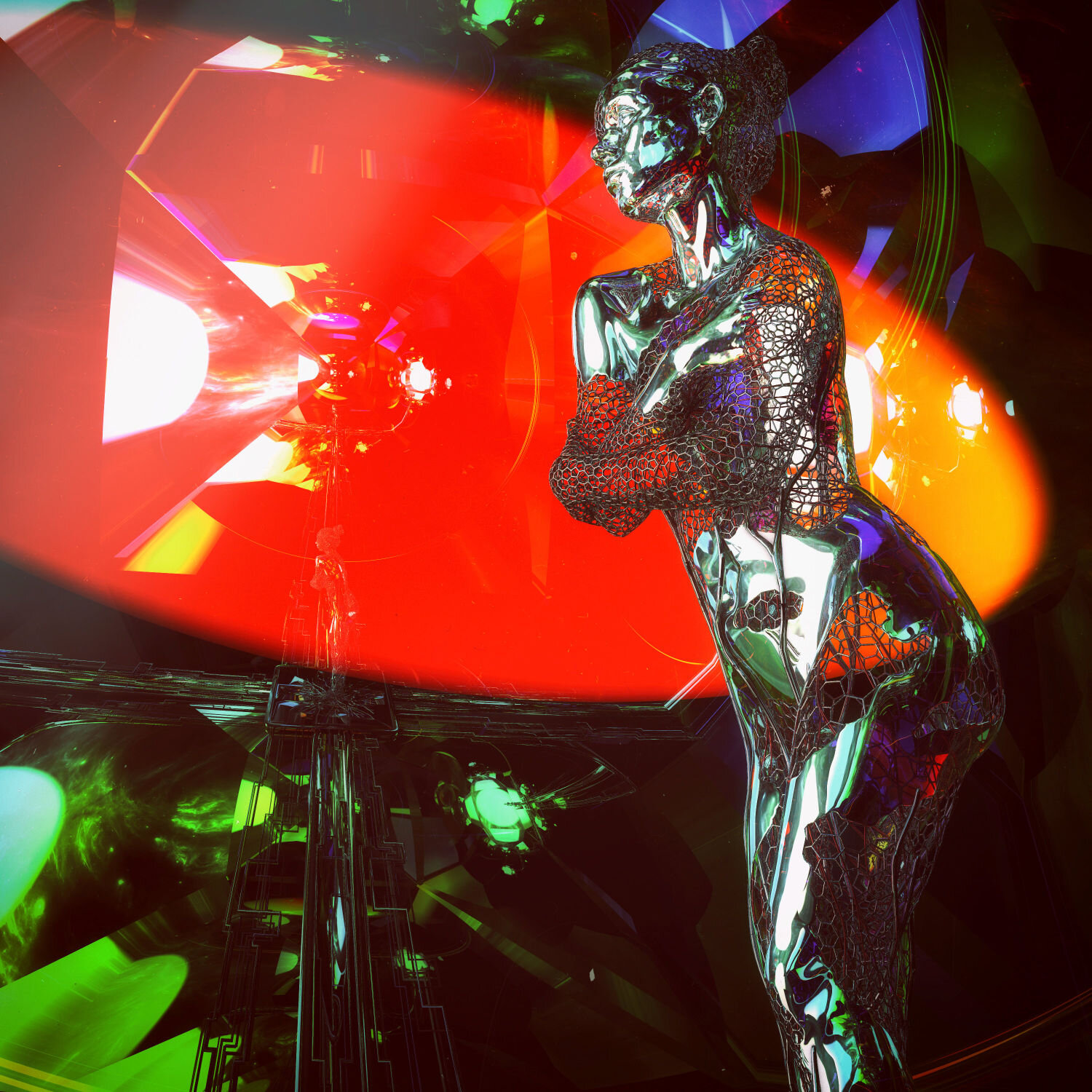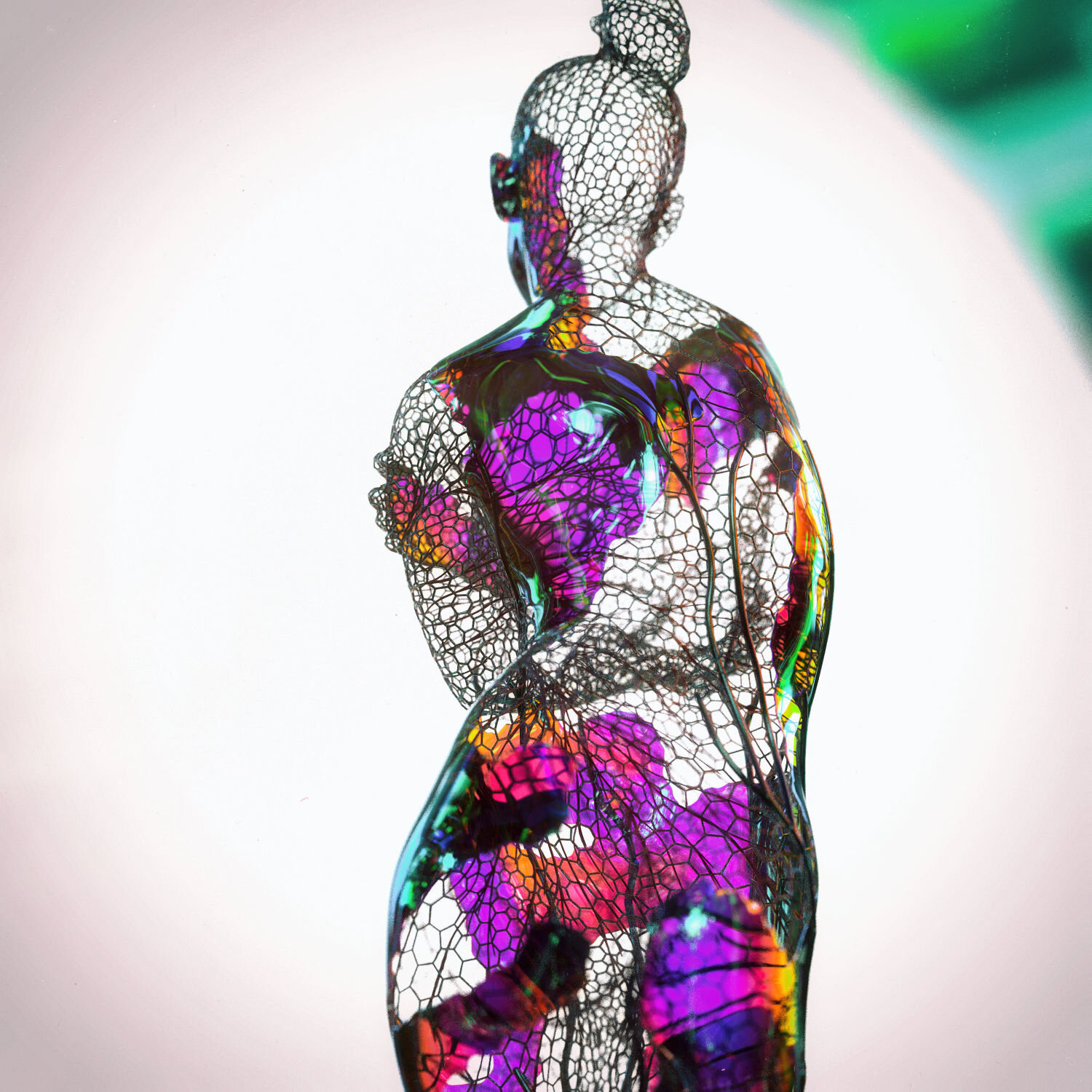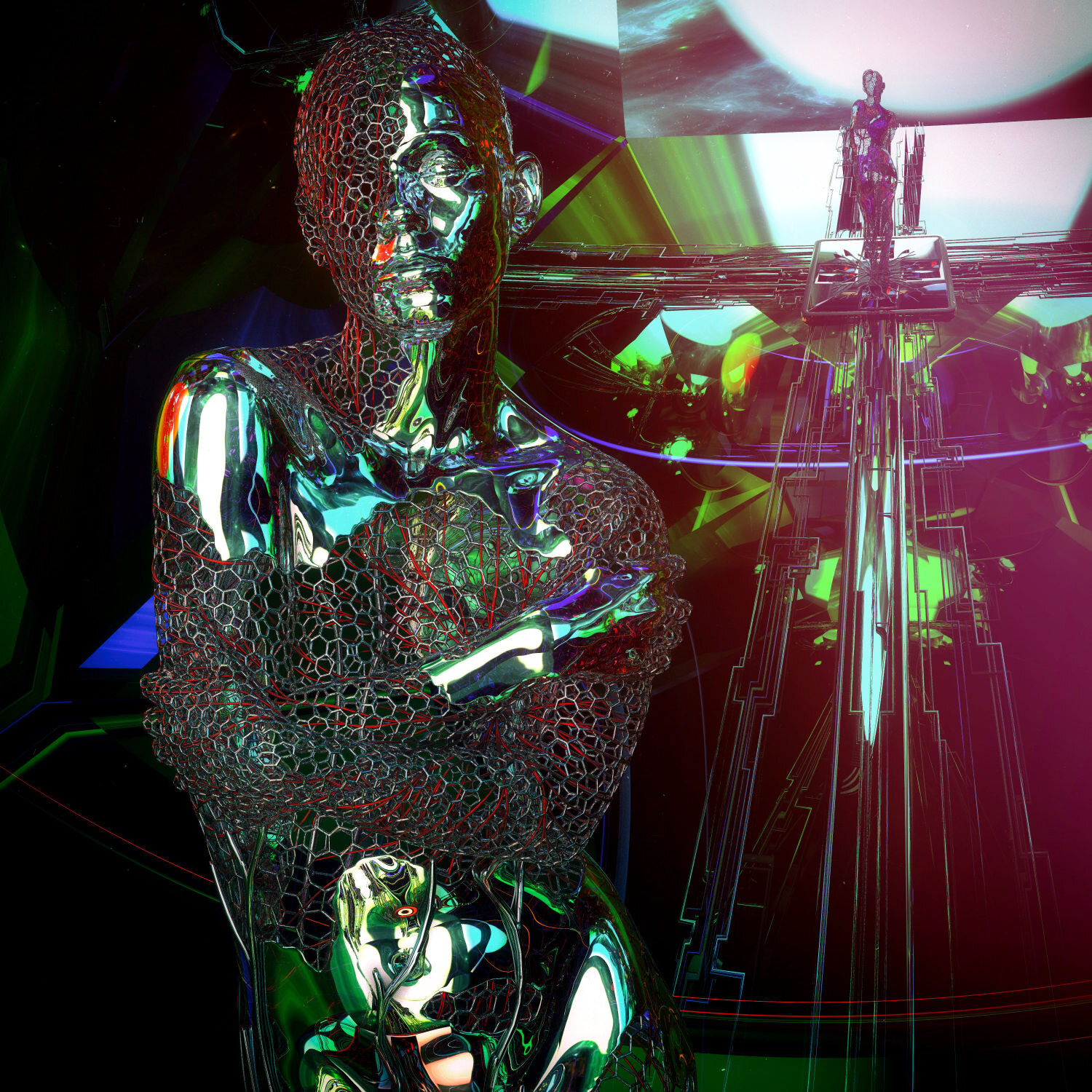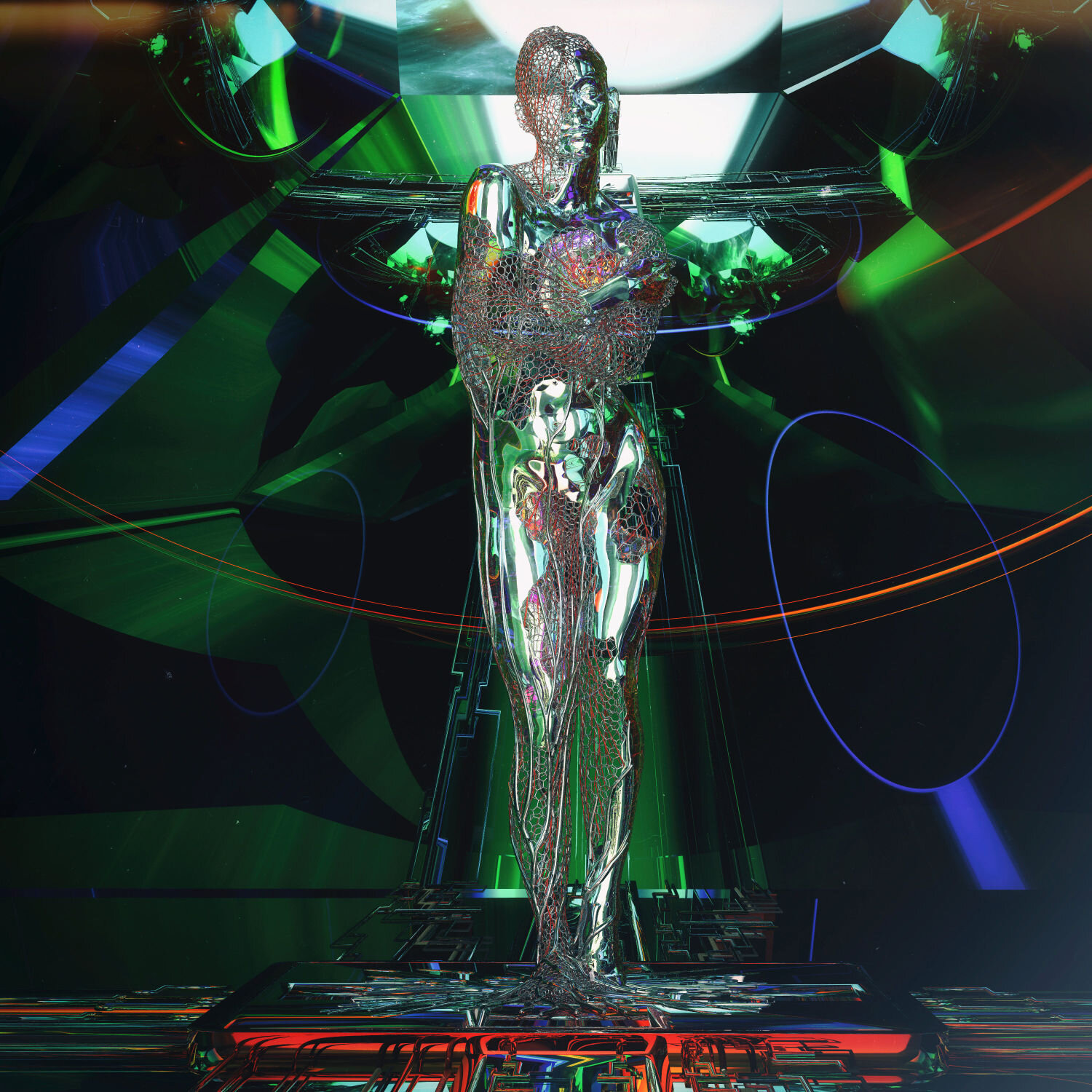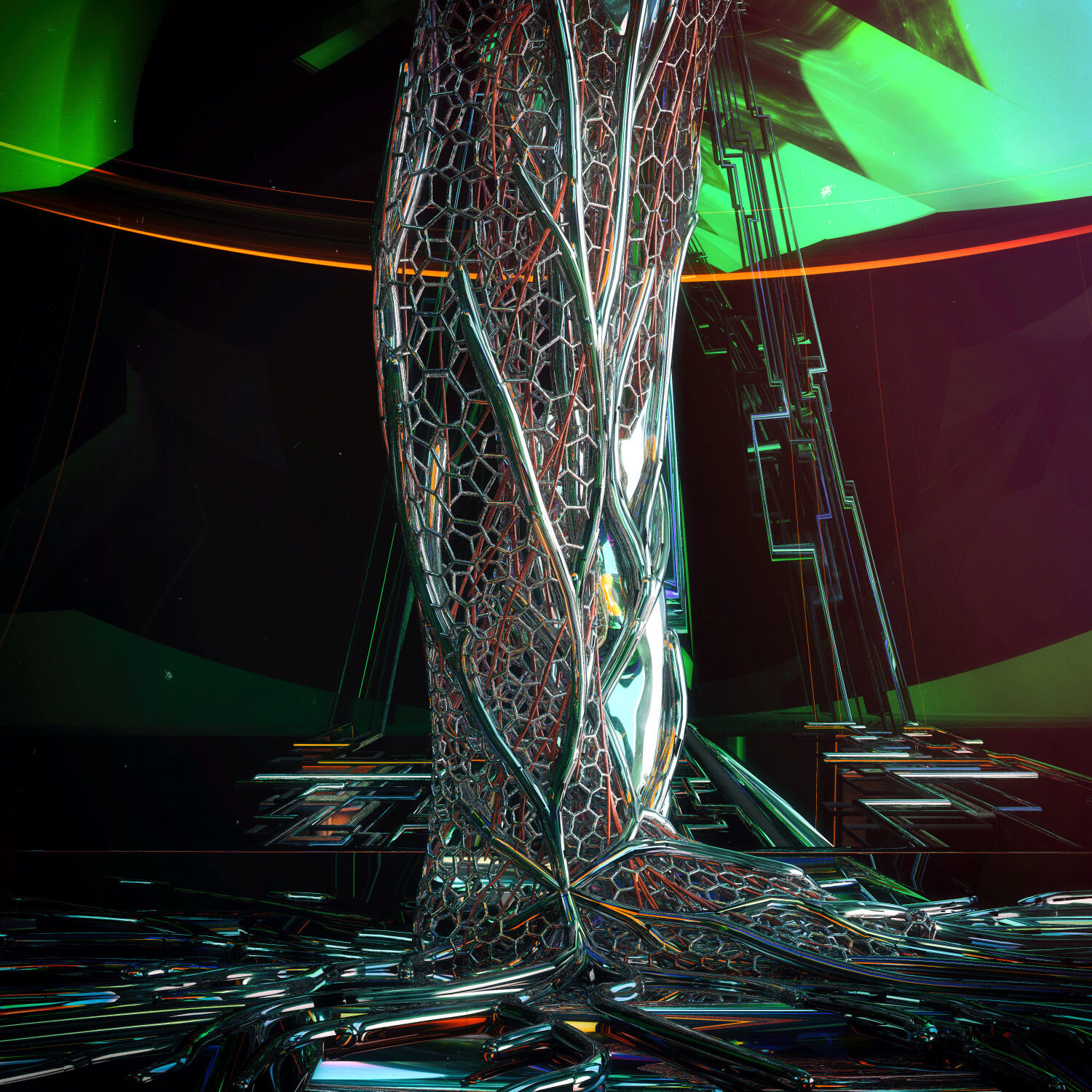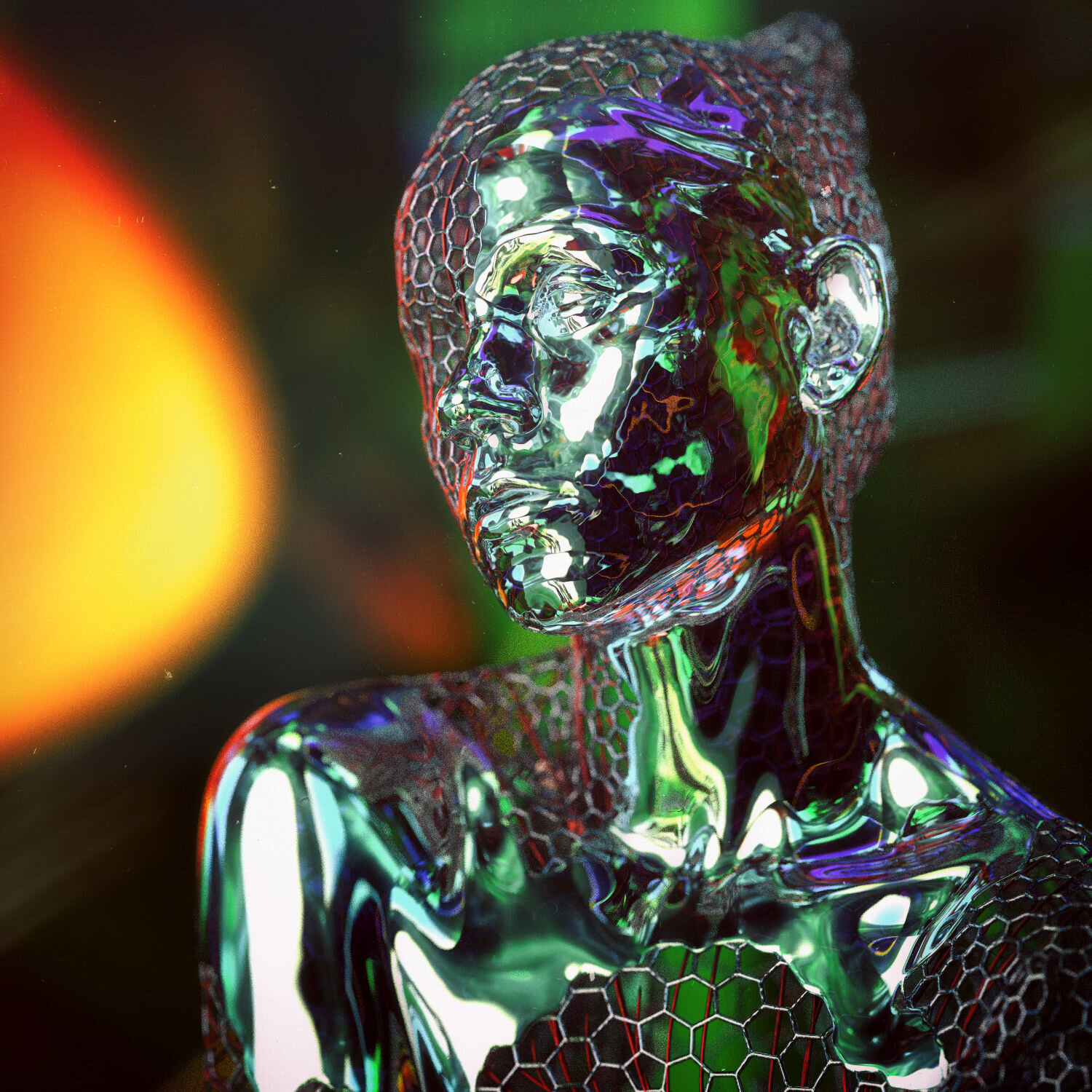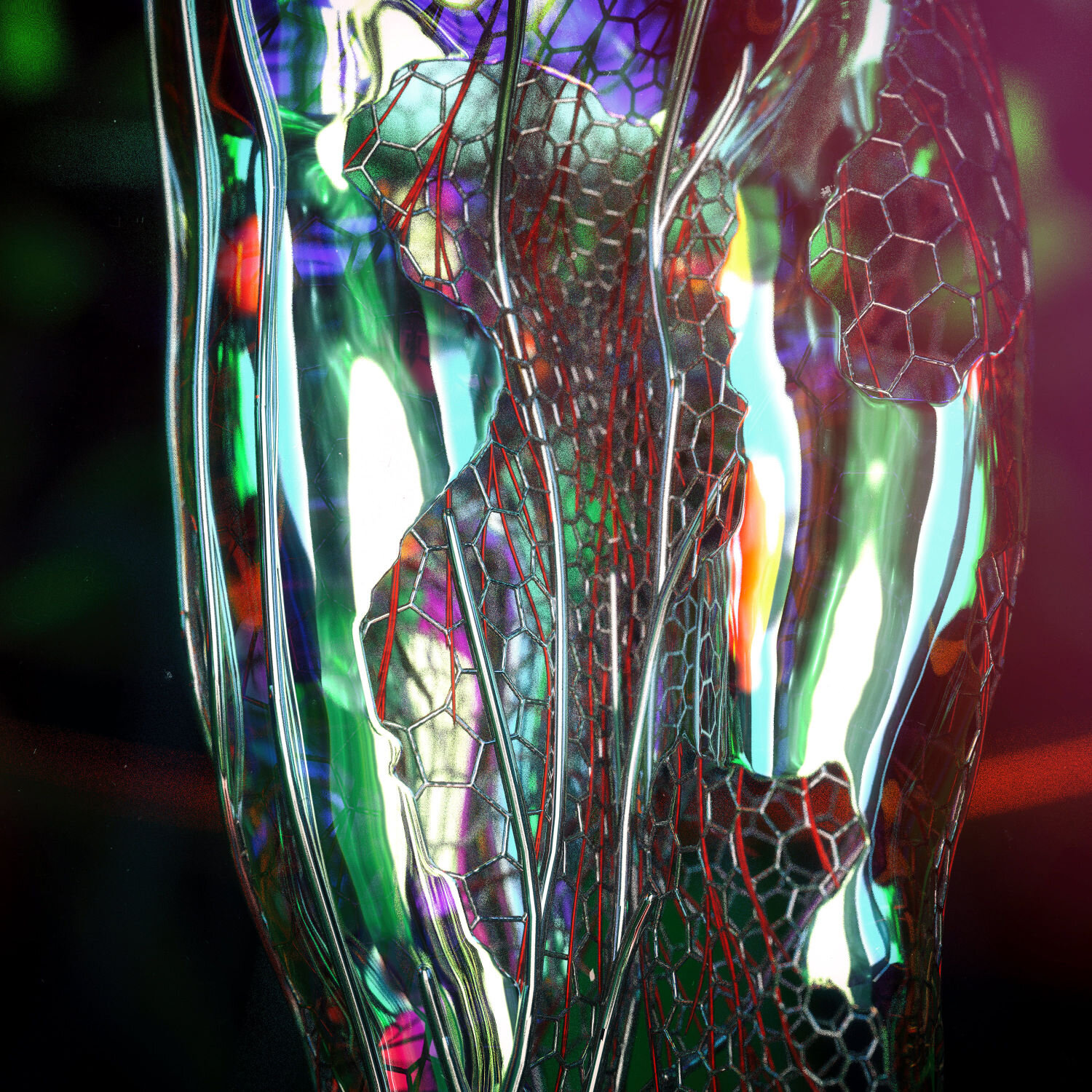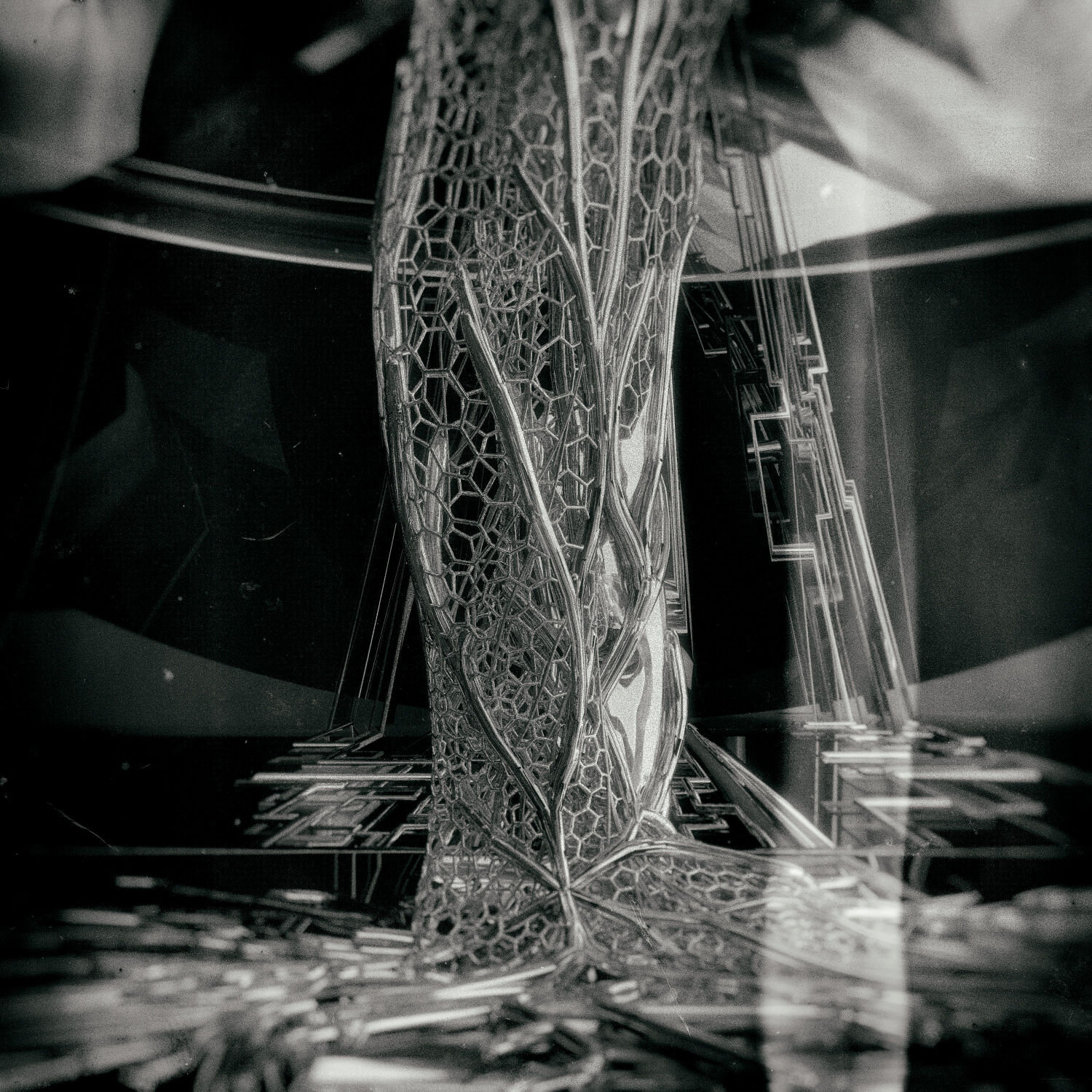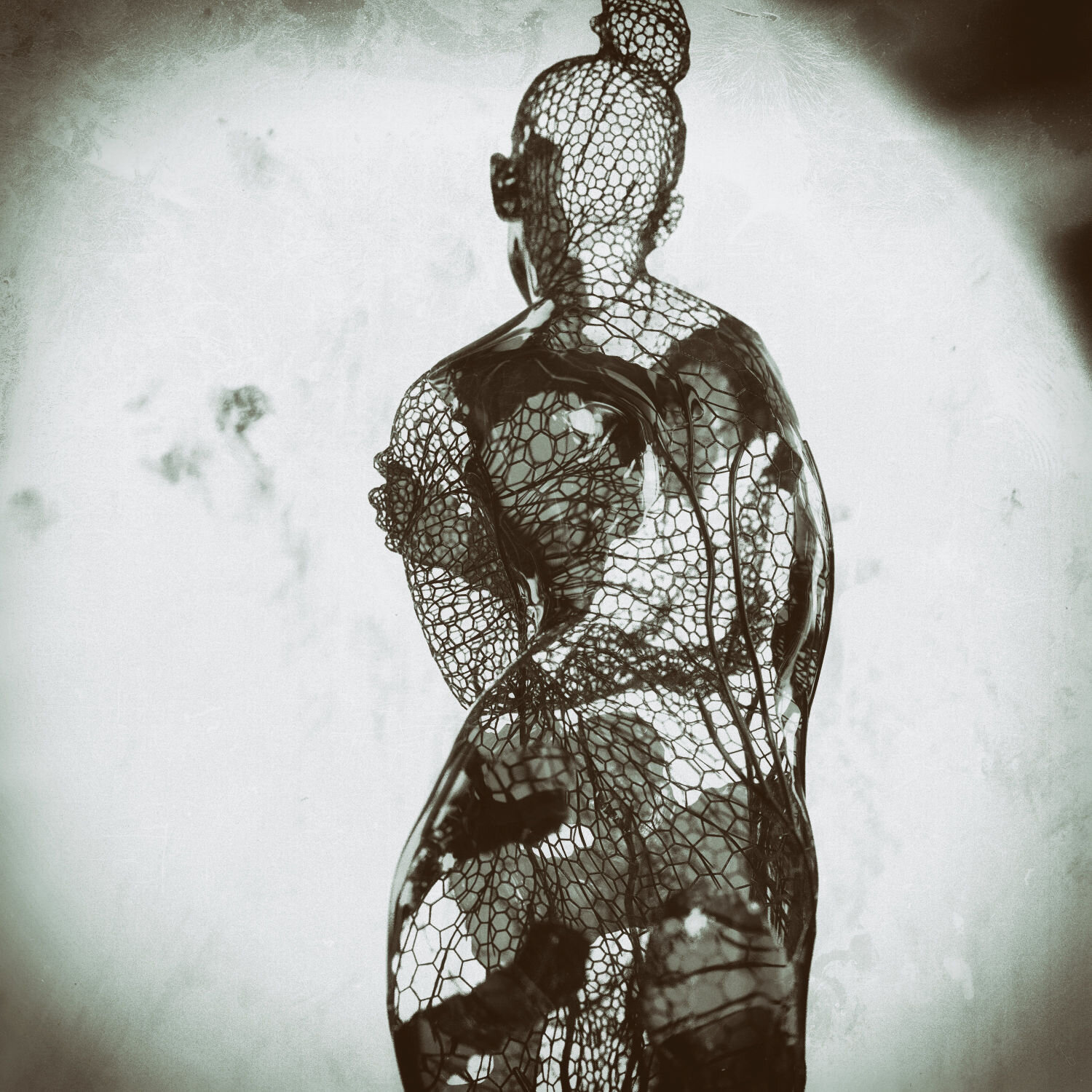nebular chimes
For this series of figures, I decided to explore a more retro/neon aesthete in terms of the overall coloration and style. This consisted of 4 pieces in total each of which are described below.
Neon Fracture
In this piece I combined a series of different approaches to build up a more cohesive scene. I really like the Connect Adjacent Pieces node, because at higher densities it results in a formal yet fibrous encasement which reminds me of silkworm weaving patterns. That was primarily used for the tetrahedron and the stool prop. I had wanted to experiment with emissive materials as well, so I opted to make the tetrahedron into a layered structure - there's a glowing core encased in the lattice.
The figure is a hybridic structure - the exterior shell consists of the main surface mesh with a dual mesh subdivision applied while the underlay is a wireframe dual mesh which yields those tidy honeycomb patterns. I opted for an adaptive generation meaning that areas of higher complexity are denser resulting in some structural variety which reflects the complexity of the smaller anatomical features of the model (ie facial features).
Stylistically, for some strange reason I remembered Refn's Neon Demon so I borrowed that brash, glowing color palette to light and texture it.
Nebular Vesper
Over the past few weeks, as I've dived back into houdini and procedural systems in an effort to develop my understanding and knowledge of that field, I've been primarily focused on simple algorithms their basic combinations. So a mesh converted to a volume, advected and then combined with a wireframe expression of the original geometry.
This example marks the point of trying to utilize those fundamental and basic operations to create scenes and flesh out characters and concepts which have more of a cohesive style. I'm also trying to explore the expression of multiple references that I had while growing up in the late 80s and 90s - and it's been interesting on how those formative experiences and exposures, on a subconscious level perhaps end up influencing what could be considered the beginning of a 'style'.
Musings aside - this combination approach appears promising, and I'm now considering on how maybe the next step could be the inclusion of additional internal anatomical constructs - an endoskeleton and organs - combined with the layers of abstract exterior skins.
nebular chime
The new aspect for this work is the implementation of a simple curl noise generation which flows near the surface of the main mesh so as to create this, almost ribbon-based mummification; an encasement around the figure.
I also experimented with the materiality of the room and an hdri map of star systems to quickly add a more surreal and cosmic feel to a fairly simple space. With the exception of some very basic modeling for the floor, the rest of the room is simple boxes in the space. By having this cruciform shape on the floor and having curved, reflective materials on the walls, I ended up introducing some religious iconography, aided by the camera perspective and angles.
Nebular sliver
Keeping up with the process of introducing a new technical concept with each piece, I've experimented with shortest path connectivity here. The main figure consists of two major layers - the (now typical) honeycomb underlay, and masked out remnants of an external skin - I introduced an internal 'nerve' layer to add a 'ghost' of a circulatory system, and a separate system to simulate a single origin growth from the base starting to flow upwards over the figure.
What I'm really getting into, and what was perhaps a parallel intent for exploring proceduralism, is the amount of detail that is starting to appear through the interactions of various layers - these successive layer interactions begin to form additional, compositional focal points and add depth to the overall scene.
